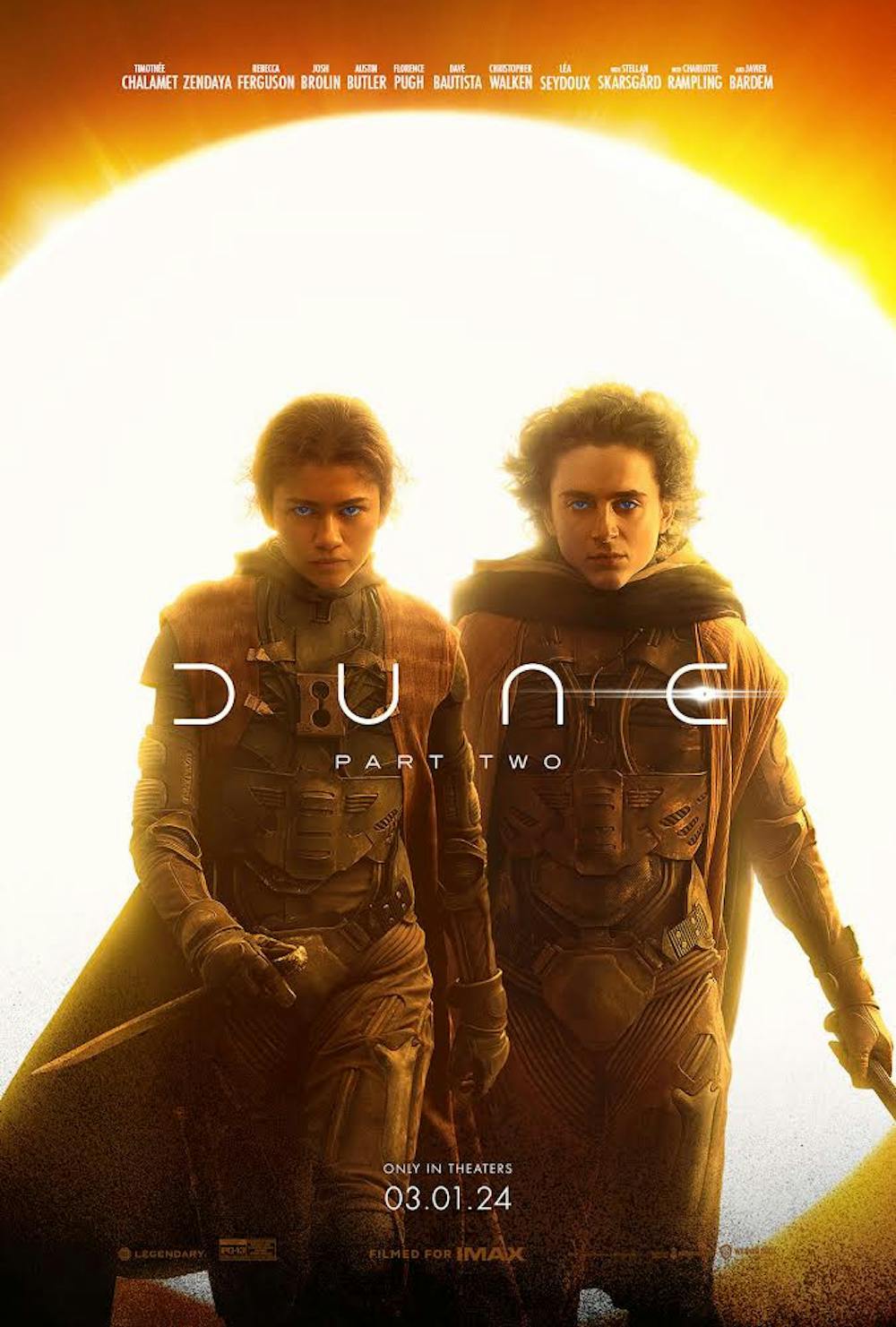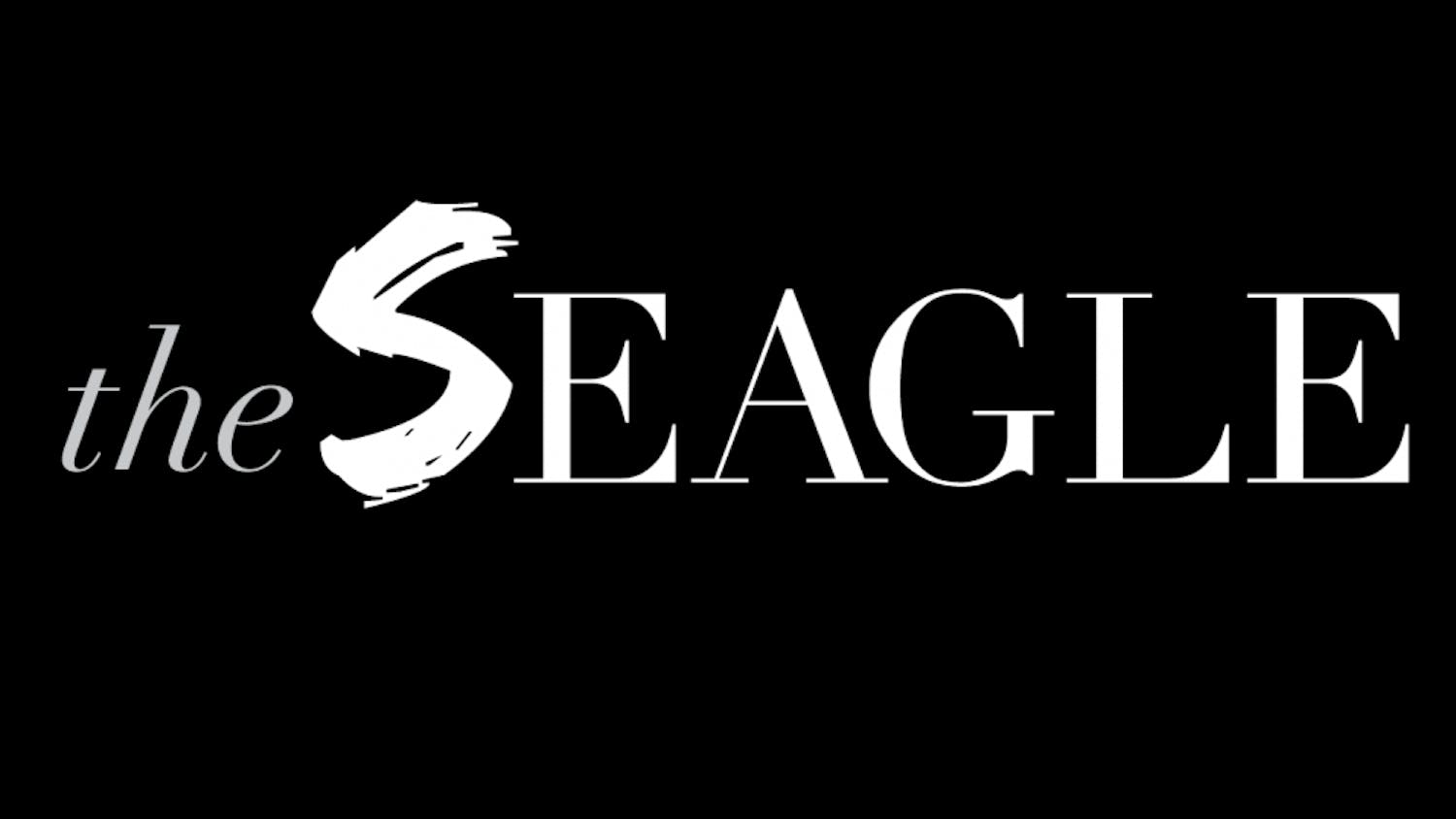At long last, critically acclaimed French-Canadian director Denis Villeneuve returns to Arrakis after nearly three years with “Dune: Part Two,” the continuation of his adaptation of Frank Herbert’s eponymous novel.
Those worried that “Dune: Part Two” would never arrive following months of delays due to the writers’ strike had to remind themselves that “fear is the mind killer,” as the film finally reaches theaters in March after its initial release date of November 2023 came and went.
If you haven’t seen the original “Dune” in a while, you may want a refresher, and, conveniently, it’s now streaming on Max.
“Part Two” wastes no time explaining the events of the previous installment. The film picks up right where the original left off, with Timothée Chalamet returning as Paul Atreides, the now-exiled heir to House Atreides on a quest to retake the desert planet Arrakis from the evil Harkonnens.
Paul enlists the help of the mysterious Fremen — persecuted tribes who occupy the desert and believe Paul to be their prophesied messiah — the “Lisan al-Gaib.” However, Paul’s revenge mission and the Fremen’s militant faith threaten a holy war that could engulf the entire galaxy.
It’s a difficult task to adapt such dense and storied source material (just ask David Lynch) but Villeneuve is up to the challenge. Even with the dizzying number of characters and the detailed world-building required to set up the story, the film never feels exposition heavy. The script hits the ideal blend of action, dialogue and perspective jumps to keep the story chugging along.
Much of the different factions’ characterization is expertly accomplished through the elaborate costume design. The shadowy robes and shawls of the Bene Gesserit, the rigid and colorless armor of the brutal Harkonnens, the sleek camouflage stillsuits of the utilitarian Fremen: all communicate everything the audience needs to know about these groups without a word.
Another highlight of “Part Two” is the sound design, which deserves to be experienced through a movie theater’s sound system.
It is a loud film and one that almost immediately bombards the audience with ambient noise: the whipping of sandy wind through the desert, the crunches and slams of the hand-to-hand combat, the cheers and shrieks of crowds of thousands. When in full force, the sounds are an assault on the ears — a few times throughout the film, the audience let out an audible gasp because of the noise level — but it ratchets up the tension and creates a visceral sense of immediacy in every scene. It also makes the moments where the sound lets up feel more intimate and impactful.
The attention to detail throughout the film is astonishing; Villeneuve’s ambitious vision for Herbert’s characters, planets and vehicles is executed meticulously.
His biggest strength is his understanding of scale. In one scene, a massive, nearly moon-sized ship descends upon Arrakis, releasing groups of smaller ships which look like flies in comparison. We then see those smaller ships fly over Arrakis, towering above the ant-like armies below, establishing the vastness of the environment in just a few seconds.
Villeneuve treats the world of “Dune” with a dual sense of wonder and terror through breathtaking cinematography and hyper-realistic digital effects.
From the glittering gold specks of the hallucinogenic drug “spice” in the desert — which trigger Paul’s visions of a galaxy-wide war — to the mountain-sized sandworms that devour spaceships whole, the film takes time to appreciate the beauty and mystery of Arrakis without letting the viewer forget its terrifying power.
With such an expansive universe, it would be easy to get lost in the scope and spectacle of it all, but Villeneuve contrasts the twin abysses of the desert and space with a human intimacy that grounds the story and connects the viewer to the beautifully rendered characters.
The personal warmth of the love story between Paul and Chani, a Fremen girl played by Zendaya, is the perfect foil to the brutal indifference of the desert and is told accordingly through long shots and closeups.
But the real emotional core of the film is Paul’s anguish over his own destiny.
In order to avenge his father and free the Fremen, he risks unleashing war and causing millions of deaths across the galaxy. It is in this role that the boyish Chalamet truly shines through.
In certain moments, he acts as a convincing messiah, but it is always that — an act. In others, the cracks in his facade show and he is a scared kid, not knowing his responsibility, terrified of what he is capable of. Chalamet walks these lines between boy and man, heir and duke, soldier and prophet, skillfully capturing Paul’s tragic internal conflict.
The star-studded cast is excellent across the board.
Feyd Rautha Harkonnen, played by Austin Butler, is a menacing and intimidating villain. Rebecca Ferguson’s depiction of Jessica Atreides’ (Paul’s mother) transformation from a flawed, yet loving mother, to the conniving Reverend Mother is genuinely unsettling in the best way — her presence makes you increasingly uncomfortable each time she shows up on screen.
Zendaya is also fantastic, and she portrays Chani with a strength and assuredness that is a serious upgrade from her novel counterpart. Chani is a voice of reason throughout the film and becomes one of the most relatable characters as the Atreides descend further and further into darkness. Javier Bardem as Stilgar provides rare moments of levity in what is otherwise a bleak film.
“Dune: Part Two’s” seriousness is both a strength and weakness.
It is consistently engaging and suspenseful throughout its two-and-a-half-hour runtime because the film tries to make every decision made by the characters feel consequential, but at times, this can border on cheesy.
In one kissing scene, the camera does a 360-degree spin around the characters while the music swells. Edward Said would have a field day with Zimmer’s score, which is riddled with overdone musical exoticism tropes played totally seriously (in one recurring theme, a woman belts out notes in an unintelligible language from a scale that would not be out of place in “Aladdin”).
Others may object to the white savior narrative the film engages with.
We’ve all seen it before in movies like “Avatar” — a white person comes along to lead and save a non-white native population, allowing white people to feel good about themselves while maintaining their position of supremacy. It is easy to see that dynamic at play between Paul and the mostly non-white Fremen, but at every turn, Villeneuve makes it clear that Paul is not really a savior or a messiah at all.
First, the kind of “saving” that Paul offers would lead the Fremen into a miserable holy war creating unparalleled suffering and destruction, and second, the prophecy that led the Fremen to believe Paul is a messiah is a complete lie, which Paul and Jessica know. While this does not and should not totally shield the film from any criticism about its racial politics, the film at the very least has something critical to say about the white savior trope and the very idea of a messiah. It also makes all of Paul’s victories feel increasingly hollow as the scrappy rebellion slowly morphs into the same oppressive, genocidal force it initially fought against.
Ultimately, “Dune: Part Two” is a captivating film both technically and thematically, and Villeneuve honors the source material while adapting it appropriately for the big screen.
I could continue to drone on about the acting, sets, characters, etc., but what makes Villeneuve’s version of “Dune” so memorable is that he just seems to be in awe of the story he is telling, and I couldn’t help but hang on to every second; his awe is infectious.
This article was edited by Sara Winick and Abigail Pritchard. Copy editing done by Luna Jinks and Julia Patton.





